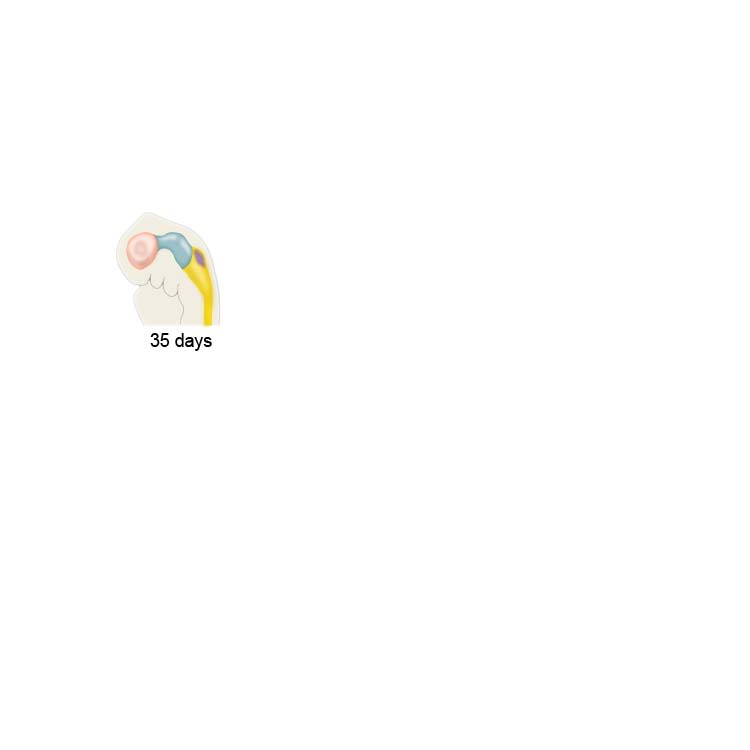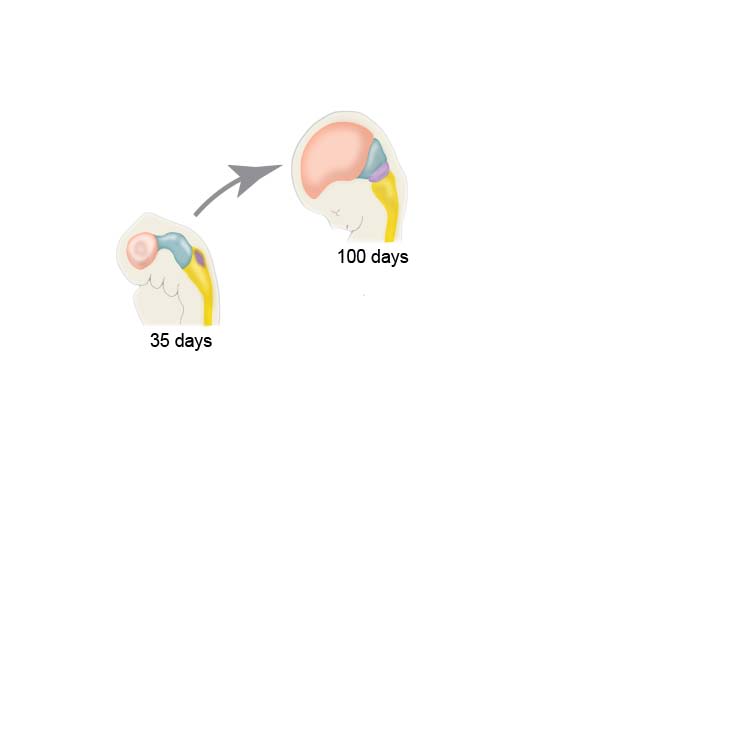Timeline of brain development
The BRAIN magazine

The process of building a brain is orderly and complex, and set in motion by genes which orchestrate a cascade of biological processes.
The first sign of anything resembling a brain and spinal cord is seen within the first month of gestation, when a human foetus is barely 6-7 mm long.
Growth-promoting molecules then initiate the development of specialised areas and the emergence of two symmetrical halves of the early brain, including the two cortical hemispheres.
Once the basic brain structures are established, they are populated with cells. This process is called neurogenesis, which means the birth of neurons. These new neurons are born in specialised regions deep in the brain. Then, guided by molecular cues, they migrate to their final positions in the mature brain.
At birth, most neurons have been born, but the brain is only around 25% of its adult weight. This is because the brain’s support cells (glia) are only just emerging. Glial cells—which outnumber neurons—perform various activities critical for proper brain function and health, such as maintaining homeostasis and supporting neuronal communication.
By two years, the human brain has grown to 80% of its original size. From this time, neurons and glia work together to refine the newly created synapses and circuits, a process that continues through adolescence.
The brain is considered full size around age 14, but circuitry continues to rewire until early adulthood.
Day zero
A sperm fertilises an egg, forming what is known as a zygote.
35 days after conception
The neural tube has closed, and the early structures of the brain and spinal cord are forming. The foetus is about 6-7mm long. Its first neurons are produced.
100 days after conception
Neurons are born deep in the brain at a rate of about 15 million/hour and then migrate to their final positions, guided by molecular signals. From there, neurons connect with each other, forming networks.
9 months after conception
At birth, the brain is about one quarter of the size of an adult brain. Now begins a period of huge brain growth. By age 2, the brain is about 80% of its adult size, as neuron circuitry matures and protective glial cells are born.
Adolescent
At age 14, the brain reaches its full size, but the circuitry continues to rewire until early adulthood.
Adult
By age 25, the brain is hardwired with its neural connections, but can still adapt because of its plasticity—the ability of neurons to strengthen or weaken their connections in response to information.
Definitions
Gestation
The period from conception until the birth of a baby.
In utero
Latin for inside a woman’s uterus (womb).
Postnatal
The period from the birth of a baby to ~6 weeks of age.




